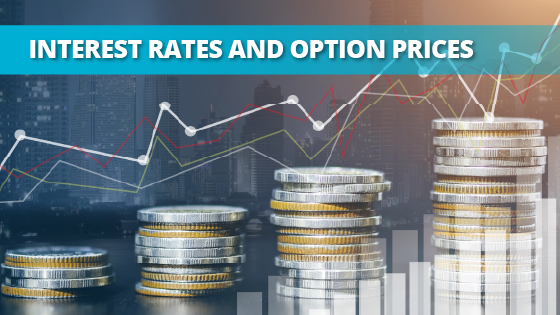Many different factors influence the price of an option, such as implied volatility or time until expiration. While interest rates aren’t typically on the list of must-know option Greeks, the Federal Reserve’s aggressive plans to hike interest rates in response to rising inflation are putting interest rates back into the spotlight for the first time in a long time.
Let’s take a closer look at how interest rates affect options and how you can assess that risk before entering positions.
What Are Interest Rates?
Interest rates influence the cost of capital for individuals and companies. While they vary from lender to lender, the Federal Reserve Open Market Committee (FOMC) sets the benchmark federal funds rate. And these benchmark interest rates have a significant impact on the pricing of most financial assets—particularly long-term assets like bonds.
For example, most bonds pay a fixed interest rate over a set period. If interest rates rise, newly issued bonds must respond by increasing their interest rates to attract capital. As a result, older bonds that still pay lower interest rates become less attractive. As investors sell these bonds, the price drops until the yield reaches the prevailing interest rate.
Interest rates also affect the cost of capital for consumers, businesses, and investors. For instance, short-sellers that borrow money to short-sell stocks will have to pay a higher interest rate on their loans. Individuals will feel the pain of higher interest rates when applying for a new mortgage and on variable rate debt like credit cards. Businesses will have to pay a higher rate when issuing bonds. This means capital investment projects must cover higher interest expenses to be profitable.
How Rates Affect Options
The best way to understand the impact of interest rates on option pricing is to compare stock purchases with comparable option purchases. At the same time, you must assume that professional traders use interest-bearing loans to finance long positions and receive interest-earning capital for short positions rather than using all-cash.
Suppose that Investor A purchases 100 shares of stock at $10 for $1,000. Assuming they’re borrowing the $1,000, they will owe interest on that amount as long as they hold it. Meanwhile, Investor B purchases a call option for 100 shares for $0.12, resulting in a $12 cash outlay. The profit potential is the same, but Investor B pays far less interest on the loan.
Put options have the opposite effect. For example, suppose Investor A short sells 100 shares of stock at $10 and invests the $1,000 in proceeds in an interest-bearing account. Meanwhile, Investor B purchases a put option and receives just $120 in option premiums. In this scenario, Investor A makes far more interest income than Investor B.
Finally, these same dynamics apply to writing (selling) options. Call sellers benefit from higher premiums but put sellers will receive less. Covered call writers will continue to benefit as rates rise.
Reading an Option’s Rho
The effect of interest rates on option prices is expressed in the Greek standard, Rho. The metric reflects how much an option price will change for every 1% movement in interest rates. For instance, a call option that costs $1.00 with a Rho value of 0.25 will increase by $0.25, or the amount of its Rho value, when interest rates rise by 1%.
Most of the time, interest rates rise and fall very slowly, meaning that Rho has little impact on option pricing. Since the 2008 financial crisis, Rho has had a minimal effect on option prices as interest rates stayed near zero. However, the recent increase in interest rates and the Federal Reserve’s aggressive plans to hike them could make Rho more critical.
Source: CBOE
For example, a VIX Aug 2022 100 call has a Rho value of 19.675 as of March 29, 2022, significantly affecting the option price.
Effects on Income Investors
Rising interest rates have a negative impact on many fixed-income investments, such as bonds. As a result, retirement investors that rely on a fixed income may have trouble adjusting their portfolios. And lofty equity valuations and the potential for a recession compound these problems by making growth stocks riskier.
Fortunately, covered calls provide a compelling alternative to bonds and basic buy and hold investing. Retirement investors can purchase high quality stocks and write covered calls against them to generate an income rather than owning bonds or just holding stocks. They can even benefit from the higher expected return of equities while reducing their risk with covered calls and cash secured puts.
Lattco Automated Trading Software – Source: Snider Advisors
The Snider Investment Method provides an easy-to-use framework for finding, buying, and managing covered call and cash-secured put positions. You can even use the Snider Investment Method combined with the Lattco platform to automatically executive trades and manage your portfolio, freeing up your time to focus on other things.
The Bottom Line
Interest rates affect nearly every part of the economy, including the pricing of financial assets. While most fixed-income investments suffer when interest rates rise, covered call options become more profitable and offer an alternative to bonds and a boost to stocks. As a result, fixed-income investors may want to explore these options for their portfolios.
If you’re interested in generating income with covered calls and cash-secured puts, the Snider Investment Method provides a robust framework to manage risk and maximize returns. Sign up for our free e-course or inquire about our asset management services.







